For those looking to get the most out of the official drag racing game, NHRA: Speed For All by Team6 Game Studios and GameMill Entertainment, there are a few things you should know before you get going on your virtual drag racing journey.
PRACTICE MAKES PERFECT
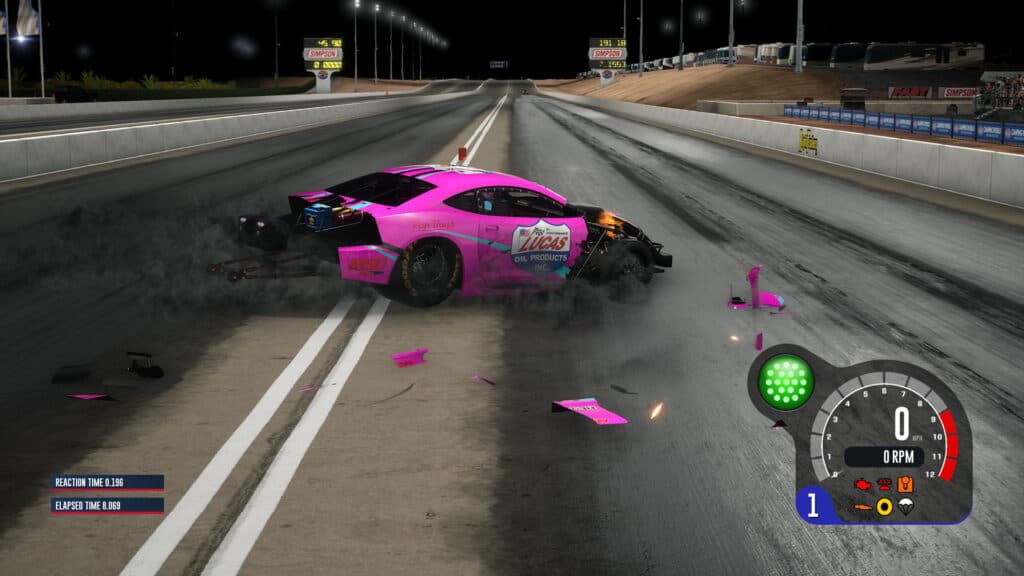
A simple yet often overlooked tip is that when learning any new game, practising is going to be pivotal to both enjoyment and success. In the career mode especially, it’s important to try things out and learn, you really won’t otherwise.
Each different class of car – Super Mods, Pro Mods, Pro Stock, Funny Car and Top Fuel – all have different nuances.
Just having a really good reaction time isn’t going to bring you to the top of the game – learning how to do all the things, from the set-up, to the upgrades, to the burnout, all the way to the line is important equally.
Tools that can be utilized include the Test Track, single player or the asynchronous multiplayer outside of the career mode – every little helps.
THE RIGHT WAY TO BURNOUT
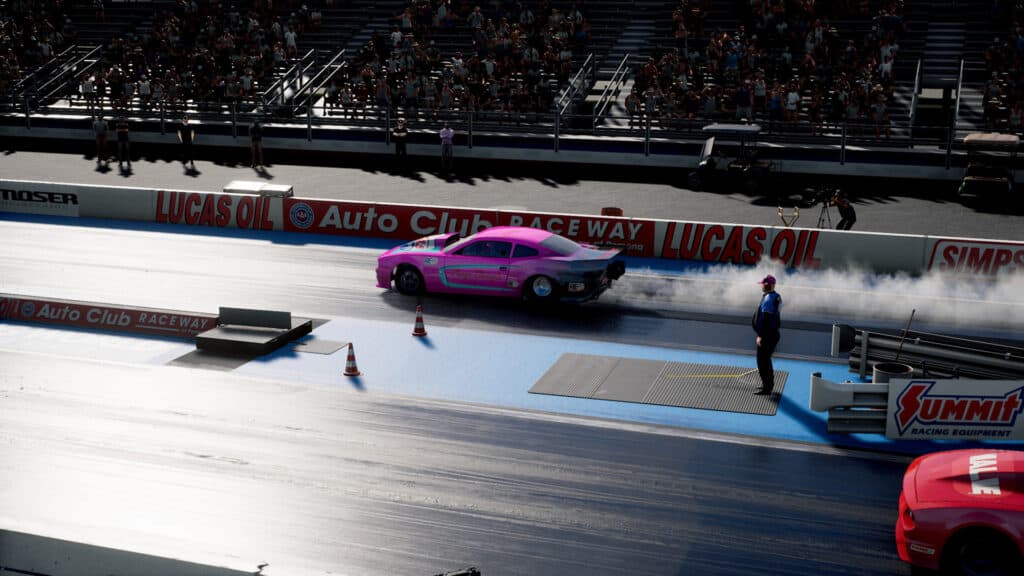
The burnout is the opening act of the drag race. The goal is to heat up the tires to get the proper temperatures before actually taking off and setting sail towards the finish line.
You’ll want to get the tires to be in the green. If it’s a blue-green, it’s on the side of too cool. If it’s more of a brown-green, you may have overcooked it. Keeping the tires cool will mean less grip on the start.
Too hot and the tires might fail.
Each different class of car does its burnout slightly different than the rest. On some cars like the Super Mod, Pro Mode and Pro Stock, you’ll need to play with the brakes to get a proper spin on the tires. In Funny Car, the tires will get to temp without the need for brakes, but you’ll need to make sure you keep the car straight.
As for Top Fuel, just punch it, but make sure you don’t punch it for too long.
Keeping it in a straight line also makes a difference. The rubber that’s laid down is basically the path you want to take off the line for the maximum launch sequence. If you burnout in a squiggle, the car may end up veering off to one side or the other, or worse, you may crash. Once again, practice makes perfect.
CAREER TIP: WATCH YOUR SPENDING
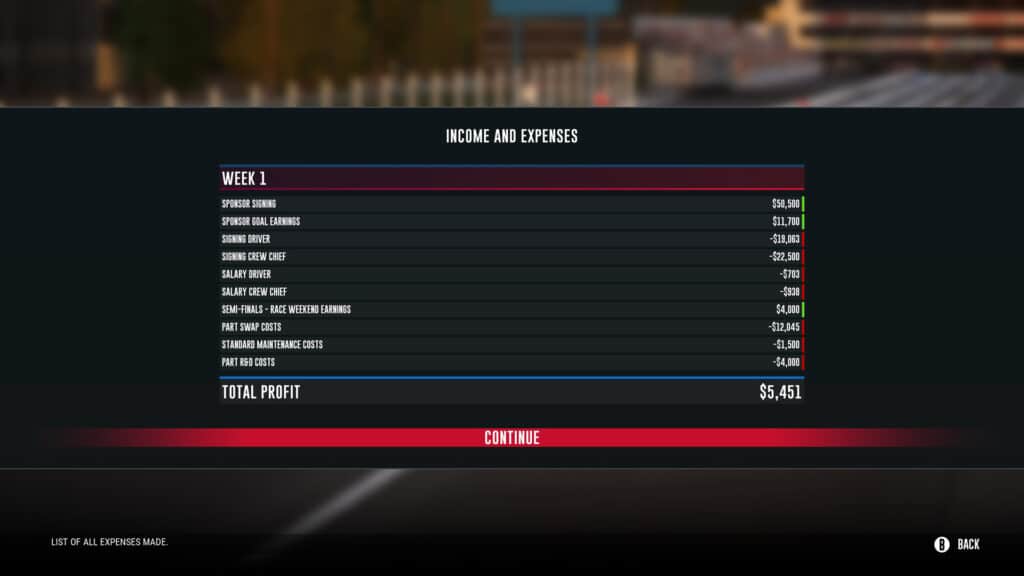
You can go bankrupt quite easily in the NHRA: Speed for All career mode! It happened to me twice while I wasn’t paying attention, and it all came from overspending during the race weekends.
Sponsors only pay out so much, so if you’re spending on part replacements through a race weekend with no result to show, that’s bad news for your virtual wallet.
Things like new parts, research and development, and team hires will deplete your bank if you’re not careful as well. Then, on a race weekend, if you keep crashing, your season may end prematurely. Thankfully, bankruptcy does not end your career, just your season.
Make sure you keep an eye on the bank account. Higher-tiered parts will cost way more to replace on a race weekend than the lesser-tiered items.
If you don’t have a crew chief who can repair as much in the time limit, you might be cornered into giving up a race weekend to save your team’s season. Basically, just be as fiscally smart as you can be to keep the dream alive.
UPGRADE AND DEVELOP
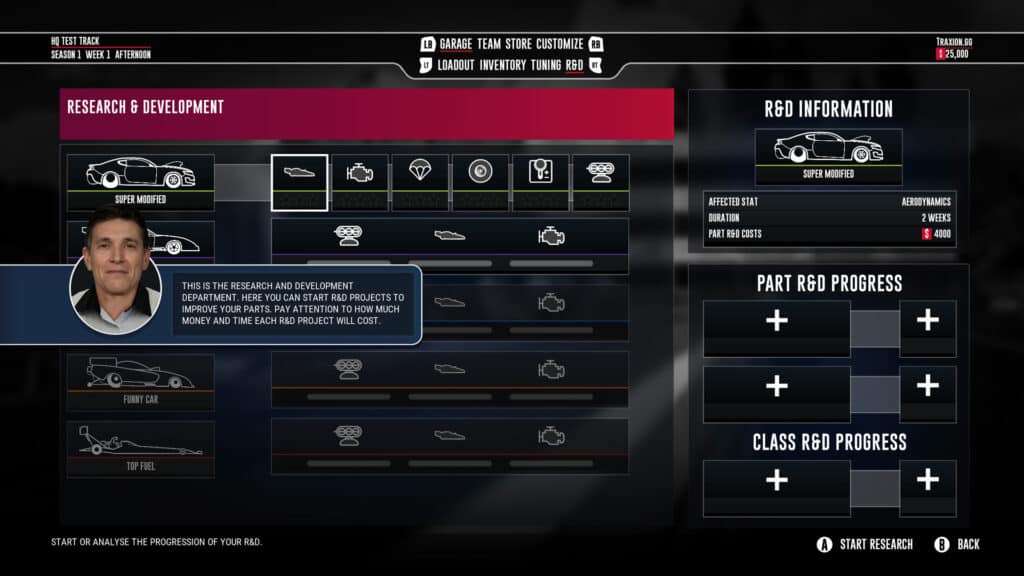
In the same breath, you aren’t going to meet the sponsor’s demands if you’re not making your car a better piece.
Research and Development is huge in the NHRA: Speed for All career mode as each little thing could make or break a race weekend.
Just because you have the nicest motor doesn’t mean it’s the best. If you’re able to fully R&D a part, maybe taking something that’s more reliable than fast might be a better move as the speed difference might not be as big between the parts.
Again, however, it all stems back to the last point, where you’ll need to watch your money situation. Don’t spend it all in one place and kill yourself off before you can reap any benefits.
HAVING THE RIGHT SET-UP
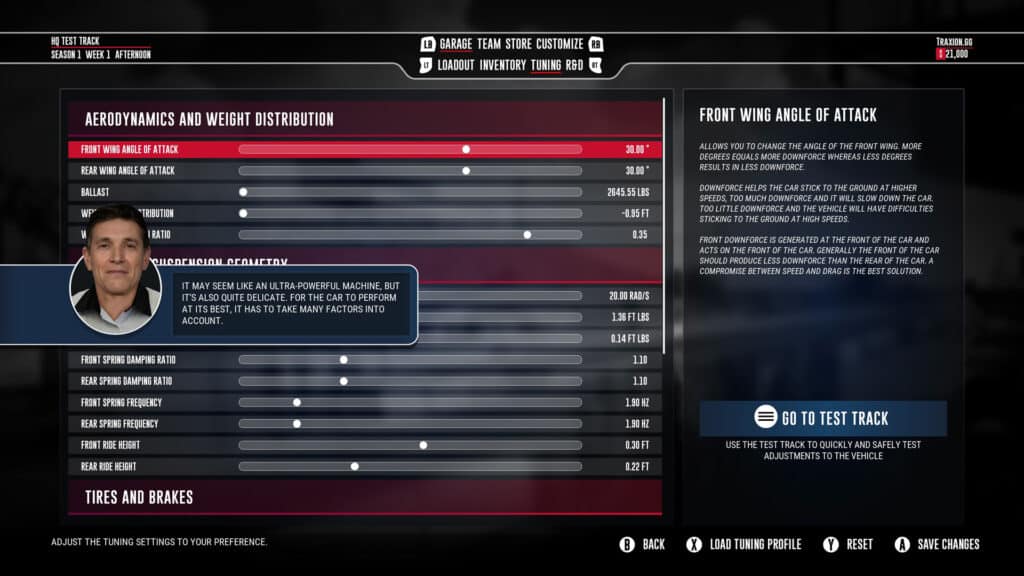
Finally, if you’ve managed to get all the upgrades, done all the practising, kept all the financials in order and you know how to do a proper burnout, and you’re still losing, then you need to take a look at the set-up screen.
Simple adjustments can make a world of difference in the top speed, or the tire grip, or getting through the gears, whatever it may be that is the struggle point. Plus, different tracks race differently than others based on weather and track conditions. It’s a huge strategy.
If you’re having trouble with getting a burnout completed without crashing, look to adjust the Steering Speed to your preference so it’s either less jerky or more responsive, whichever you need to succeed. Adjustments like the springs and ride heights help with getting the car sealed to the track, but if it’s too low, you might be losing speed by bottoming out.
The way the car accelerates and gets to speed comes from the proper tire pressures and gear ratios. Fine tuning those will get the right balance of acceleration and top speed to win it down the line in the 1000-foot contest.
Go back to the Test Track and try out different set-ups before a race weekend. Try different set-ups in different weather. Just keep trying new things until you find something that works, something to get you Wally after Wally in the top levels of NHRA competition.
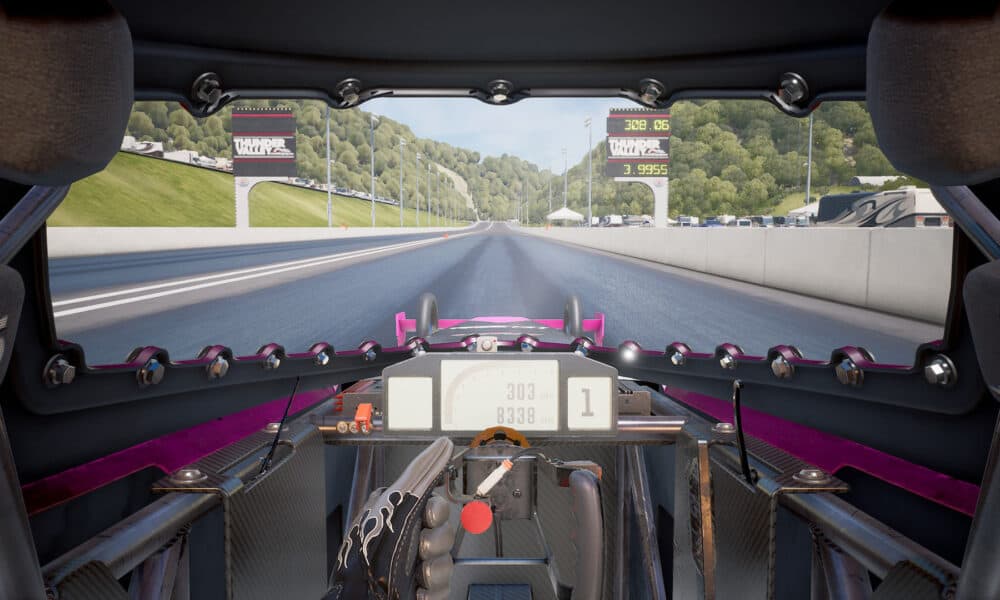




Chat with the Community
Sign Up To CommentIt's completely Free
I’m quite new.I’m struggling with the set up of Pro stock?